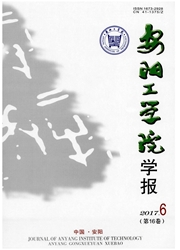

 中文摘要:
中文摘要:
通过数据拟合建立区域地磁场模型时,一般都存在截断阶数的选取与边界效应的控制问题。针对常用的Taylor多项式模型和Legendre多项式模型,结合中国地区1960、1970、1990和2000年的实测地磁数据,分别研究了两种问题的解决方案。首先计算模型的均方根偏差(RMSE)可初步确定截断阶数的选取范围,再计算AKAIKE信息标准值(AIC)与标准均方根偏差(NRMSE)并进行比较,可确定合适的截断阶数。通过异常区域添加法(首次提出)与均匀添加法逐次添加境外补充点,发现随着补充点的增加,境外磁异常极值点强度逐步减少并趋于稳定。均匀添加法能够更好地控制中国地区的边界效应,而异常区域添加法更适合处理小尺度地区的边界效应。根据结果,提出了三步法以确定截断阶数,还提出了两个准则以基本确定补充点的数量,从而可较好地控制边界效应。
 英文摘要:
英文摘要:
The selection of the truncation level (TL) and the control of boundary effect (BE) are critical in regional geomagnetic field models that are based on data fitting. We combine Taylor and Legendre polynomials to model geomagnetic data over mainland China for years 1960, 1970, 1990, and 2000. To tackle the TL and BE problems, we first determine the range of TL by calculating the root-mean-square error (RMSE) of the models. Next, we determine the optimum TL using the Akaike information criterion (AIC) and the normalized root- mean-square error (NRMSE). We use the regional anomaly addition (RAA) and the uniform addition (UA) method to add supplementary point outside the national boundary, and find that the intensities of extreme points gradually decrease and stabilize. The UA method better controls BEs over China, whereas the RAA method does a better job at smaller scales. In summary, we rely on a three-step method to determine the optimum TL and propose criteria to determine the optimum number of supplementary points.
 同期刊论文项目
同期刊论文项目
 同项目期刊论文
同项目期刊论文
 On weighted Ostrowski type, Trapezoid type, Gruss type and Ostrowski-Gruss like inequalities on time
On weighted Ostrowski type, Trapezoid type, Gruss type and Ostrowski-Gruss like inequalities on time Some new generalizations of Ostrowski type inequalities on time scales involving combination of Delt
Some new generalizations of Ostrowski type inequalities on time scales involving combination of Delt Interaction between two coronal mass ejections in the 2013 may 22 large solar energetic particle eve
Interaction between two coronal mass ejections in the 2013 may 22 large solar energetic particle eve Convergence of an efficient and compact finite difference scheme for the Klein-Gordon-Zakharov equat
Convergence of an efficient and compact finite difference scheme for the Klein-Gordon-Zakharov equat A preliminary study of the single crest phenomenon in total electron content (TEC) in the equatorial
A preliminary study of the single crest phenomenon in total electron content (TEC) in the equatorial Analysis of the north-south asymmetry of the equatorial ionization anomaly around 110 degrees E long
Analysis of the north-south asymmetry of the equatorial ionization anomaly around 110 degrees E long 期刊信息
期刊信息
